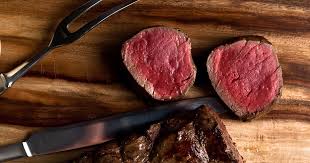Eating meat is linked with diabetes risk, new studies suggest

Unfortunately for fans of steak, salami, and sausage, the news is not positive. Consuming red and processed meat has been linked repeatedly by scientists to heart disease, some types of cancer, and early mortality.
Moreover, two new studies have contributed to the increasing amount of data suggesting that eating a lot of meat may raise your chance of developing Type 2 diabetes.
Researchers evaluated data from over 2 million adults participating in 31 studies across 20 countries, including the United States and portions of Europe and Asia, for one of the studies, which was published on Tuesday in The Lancet Diabetes and Endocrinology.
After examining participant diet survey data, researchers examined the individuals’ health an average of ten years later. Following correction for additional risk variables such as physical inactivity, smoking, a higher body mass index, and a family history of diabetes, they discovered that the participants’ risk of Type 2 diabetes rose by 15% for every 1.8 ounces of processed beef they consumed daily. (This is the same as two to three pieces of bacon or a medium-sized sausage.) Their risk rose by 10% for every 3.5 ounces of raw red meat they ate each day. This roughly equates to the size of a little steak.
Further research is required, according to Dr. Nita Forouhi, a professor of population health and nutrition at the University of Cambridge and the study’s lead investigator. The data also suggested that eating one serving of poultry per day was linked to an 8% increase in the risk of Type 2 diabetes, but this finding was less consistent and only significant in the European studies.
The key lesson, according to her, is to eat as little red and processed meat as possible.
Why eating meat might increase your risk
These results are consistent with other research, including a sizable American study that was released in October.
According to Forouhi, there are multiple possible reasons why consuming meat on a regular basis could raise the risk of Type 2 diabetes.
Meats that are red and processed have a tendency to have more saturated fats than unsaturated fats, a combination that is linked to increased insulin resistance and the development of Type 2 diabetes.
According to Forouhi, those who consume more meat may also consume fewer fruits and vegetables and other beneficial foods.
High-heat cooking methods, such pan-frying or grilling over an open flame, can also result in the formation of certain chemicals that can harm cells, inflame the body, and increase insulin resistance, all of which can be risk factors for Type 2 diabetes.
Another long-standing theory, that heme iron, a kind of iron present in high concentrations in red meat (and to a lesser extent in fish and chicken), may be linked to kind 2 diabetes, received more support from a study published last week in the journal Nature Metabolism.
For up to 36 years, researchers tracked approximately 205,000 persons in the United States, the majority of whom were white. During that time, about 21,000 of them had Type 2 diabetes.
Individuals who consumed the most heme iron, primarily from eight to ten servings of unprocessed red meat per week, had a 26% higher risk of developing Type 2 diabetes compared to those who consumed the least. The study also found that the individuals’ blood included greater amounts of lipids, indicators of insulin resistance and inflammation, and other substances connected to Type 2 diabetes.
This strengthened the body of evidence indicating heme iron plays a significant role in the association between red meat consumption and Type 2 diabetes, according to the study’s lead investigator, Dr. Frank Hu, an epidemiology and nutrition professor at the Harvard T.H. Chan School of Public Health.
Hu, however, stated that heme iron was unable to account for the connection between processed red meat and Type 2 diabetes. He continued, “Other factors, like their sodium content and preservative, are probably more significant to the risk of processed meats.”
Although iron is a necessary mineral, excessive intake can harm the pancreas and induce inflammation, which raises the risk of diabetes, according to Dr. Dariush Mozaffarian, a Tufts University professor of medicine and cardiologist who was not involved in the study.
How much is too much?
Although consuming red and processed meats on a regular basis has been linked to lower health outcomes, Mozaffarian stated that processed meats had the strongest and most reliable association with Type 2 diabetes and other illnesses. Clearly, this is a “class to avoid,” he continued.
Processed meats include potentially healthful-appearing items like turkey sausages and deli meats, in addition to stereotypically harmful ones like hot dogs and bacon.
According to Mozaffarian, this does not imply that you should never eat certain items. Consider them as infrequent treats instead, he continued.
Hu stated that while there isn’t enough information to determine the precise amount of red meat that is excessive, a serving or two each week, such as a small pork chop or a few meatballs over spaghetti, is generally OK.
Hu advised switching from a diet that is “meat centric” to one that includes a lot of plant-based foods, such as legumes, whole grains, fruits, and vegetables, as these have all been associated with a lower incidence of Type 2 diabetes.




